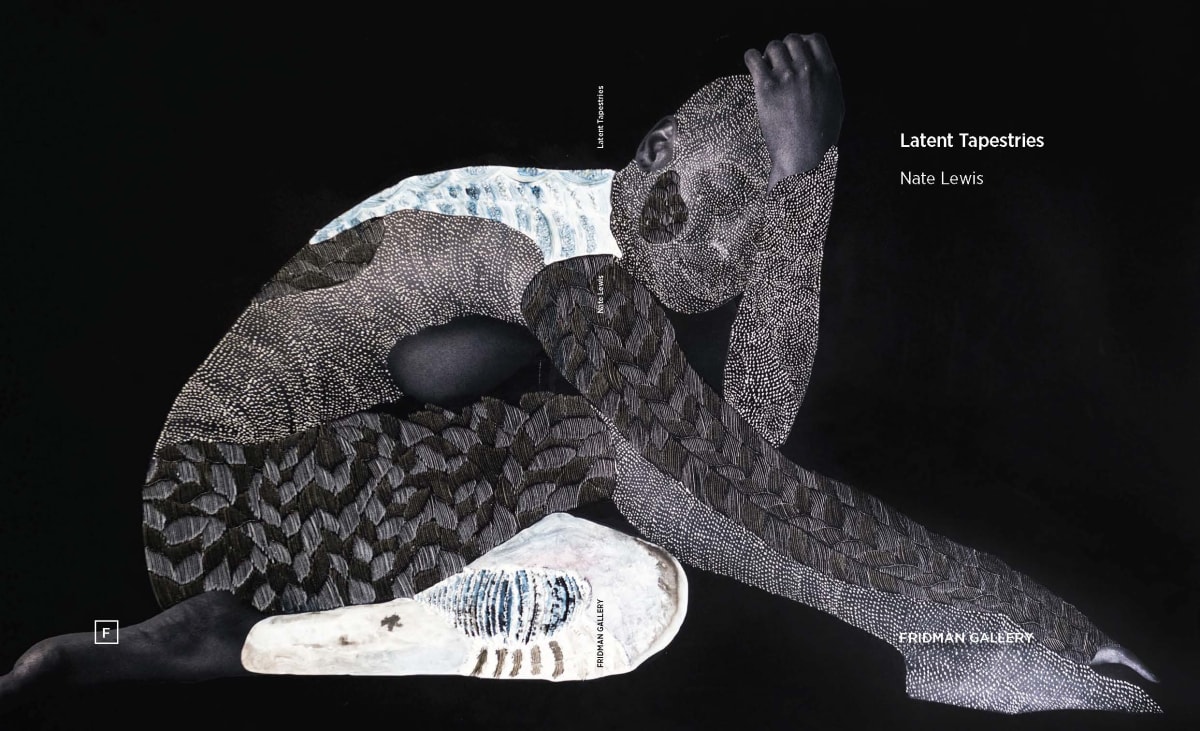Nate Lewis: Latent Tapestries
-
Fridman Gallery is honored to present the first solo exhibition in New York by Nate Lewis.
Combining elements of photography, sculpture, frottage, ink, and graphite drawings, Lewis' intricately carved works on paper reflect his experience as a critical-care nurse and challenge perspectives on race and history. Treating the paper as an organism, he sculpts patterns and textures akin to cellular tissue and uncovers anatomies of photographed subjects.
"Interacting with images is an act of care," Lewis said. "I explore and question the history of the subject, mirroring the abilities of diagnostic lenses in my own language of seeing and listening. The textures and patterns I create resonate with the rhythms and sounds I listen to."
Latent Tapestries brings together Lewis' application of medical diagnostics and its visual language; exploration of granularity of photographic images and paper; responses to the current political landscape; and the critical role of sound and music-specifically jazz-as a conduit in connecting shared histories and futures. This exhibition includes new works in the ongoing Signaling series depicting black figures in motion; a new body of work, Probing the Land, an examination of Confederate monuments; street scenes from Trump's campaign rallies and inauguration; and an early collage using electrocardiogram strips from patients he took care of. Inspired by Latent Tapestries, critically acclaimed avant-garde jazz musicians Melanie Charles, Ben Lamar Gay, Kassa Overall, Matana Roberts, and Luke Stewart created compositions that will play in a syncopated call-and-response rhythm resonating with Lewis' textures and patterns. In the gallery's media room, the artist will premiere a video, applying a meditative approach with patterns in movement in time.
To make the new series Probing the Land, Lewis photographed American monuments, including the controversial equestrian statues of Confederate officers lining Monument Avenue in Richmond, Virginia. Lewis carves into the image of the monument, destabilizes the bronze, creating a soft anatomy within, rendering the figure of the horse and the rider active, penetrable and vulnerable. The works attempt to capture the public's passion and dialogue about the statues. "Memories and truths are locked inside these monuments, as well as a spirit of discord," Lewis explains. "The monuments, themselves, are symbols of differing views of what we celebrate or lament."
Lewis explains how his experience of caring for patients influenced his work: "Output imagery of medical diagnostics is a unique language critical to understanding a patient's condition, one of colors and patterns. Depicting the invisible by color and subtleties of shades and distinctions in shapes, shifts, clarities, rhythms, and textures can indicate the potential for change. Likewise, discerning slight changes in diagnostic sounds, those of lungs, heart, pulse, and intestines is also critical. These nuanced ways of looking at and listening to a body, profoundly influenced how I see, hear, and understand the world."
The work in the exhibition is accompanied by an illustrated catalogue with an introductory essay by cultural anthropologist and curator Niama Safia Sandy.
-
-
-
-
Works
-
-
Publications
-
Press
No press articles found
-
Artist
169 Bowery, New York, NY 10002
Hours: Tuesday – Saturday | 11 AM – 6 PM, and by appointment
Contact: info@fridmangallery.com | (+1) 646 345 9831
This website uses cookies
This site uses cookies to help make it more useful to you. Please contact us to find out more about our Cookie Policy.







